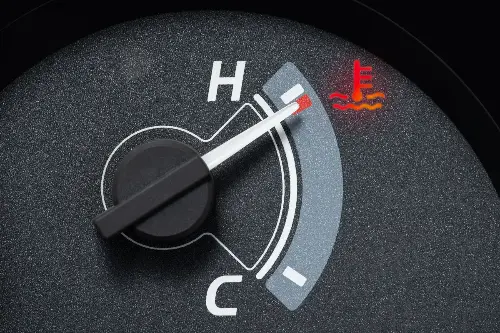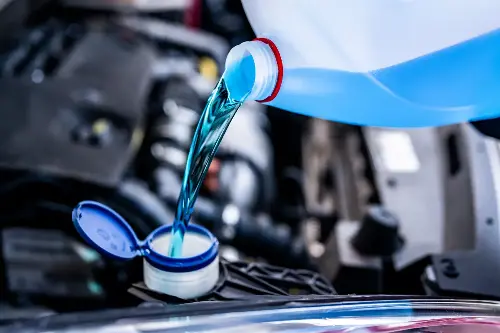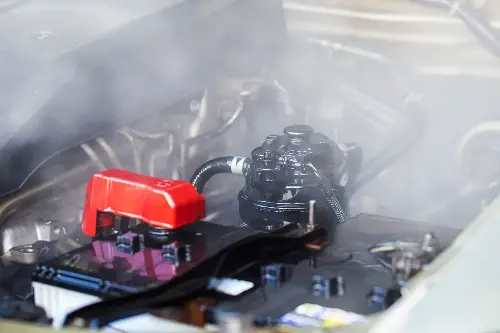Your car's cooling system is like the unsung hero of your vehicle's engine, tirelessly preventing it from overheating and saving you from potentially costly repairs. It’s a closed system that circulates coolant through the engine, absorbing excessive heat and expelling it through the radiator. It is crucial because the extreme temperatures inside a running engine can cause irreversible damage to the engine's components.
Despite its importance, it's easy to take the cooling system for granted—until, of course, it begins to fail. Recognising the signs of cooling system troubles early on can be the difference between a simple repair and a complete engine overhaul. Here are four critical indicators that suggest your cooling system might be in jeopardy.
Rising Temperature Gauge

The temperature gauge on your dashboard provides a real-time insight into your engine’s temperature. If you notice the needle creeping towards the 'hot' section or if the temperature warning light illuminates, take heed. This is often your first—and sometimes quite subtle—hint that the cooling system isn't keeping the engine at an optimal temperature.
A rising temperature gauge can indicate a number of issues within the cooling system, such as a blocked radiator, failing thermostat, or a kinked or leaking hose. Don't ignore this sign; if left unattended, the excessive heat can lead to head gasket failure or even warp engine components.
Coolant Leaks and Discolouration

Your car should not be losing coolant under normal operations. If you find bright-coloured liquid (usually green, red, blue, or yellow) beneath your car, you’ve got a leak that needs immediate attention. The coolant, also known as antifreeze, maintains the temperature balance within the engine and prevents corrosion. Leaks can happen anywhere in the cooling system, including the radiator, hoses, or water pump.
Puddles aren't the only indication of leaks. Check for white, crusty residue around the aforementioned parts, which can be a telltale symptom of gradual leakage. Additionally, if the coolant colour appears murky or rusty, it’s a sign that it's no longer effective and needs changing—a vital maintenance step that's often overlooked.
Unusual Noises and Overheating

When the engine runs hotter than usual, components will expand and can produce unusual noises. A rumbling, boiling, or gurgling noise, particularly coming from the radiator, can indicate that the coolant isn't flowing properly—possibly due to air in the system. This air can cause an airlock that stops coolant from circulating effectively, leading to localised overheating and potential engine damage.
Also, a malfunctioning water pump, which is the heart of the cooling system, can be the source of whining or grinding noises from the front of the engine. The water pump ensures that the coolant keeps moving, and without it, the entire system fails. Ignoring these noises can result in an overheated engine and an increased risk of a blown head gasket.
Reduced Performance and Steam

If you notice your car's performance isn't quite up to scratch—perhaps with reduced power or strange engine behaviour—it could be your cooling system struggling. Overheating can lead to decreased engine efficiency as the car's computer compensates to prevent damage, potentially putting your vehicle into a 'limp mode'.
A clear indicator of severe overheating is steam billowing from under the bonnet. This is often mistaken for smoke but is actually vapourised coolant. When you see this, your engine's temperature is likely at a critical level, and it's imperative to turn off the vehicle and seek assistance. Continuing to drive in this condition can result in monumental engine damage.
Preventative Measures and Regular Maintenance
To avert a major breakdown, regular inspections and maintenance of your cooling system should be a priority. Check coolant levels routinely and ensure flushes and replacements are done in accordance with your manufacturer's guidance. Keep an eye on the condition and tightness of hoses and couplings, and look out for signs of wear or cracking.
More importantly, be attentive to what your vehicle is telling you. Strange noises, leaks, performance dips, and rising temperature gauges aren’t just quirks—they're warnings. By addressing these signs early, you can keep your car running smoothly and avoid the inconvenience and expense of significant engine repairs.
Remember, a well-maintained cooling system is integral to your vehicle's longevity and performance. A little vigilance and preventative care can go a long way in keeping your car on the road and out of the repair shop.
